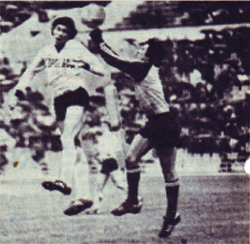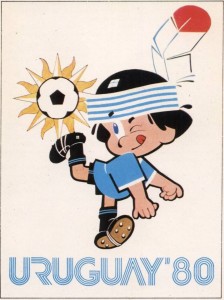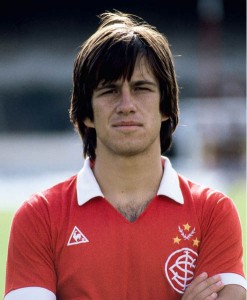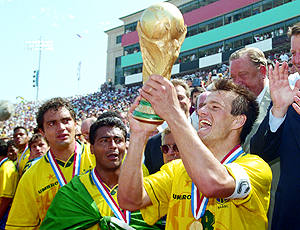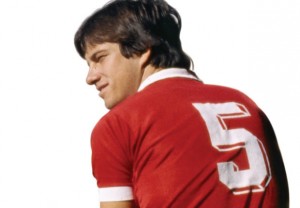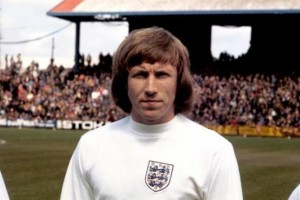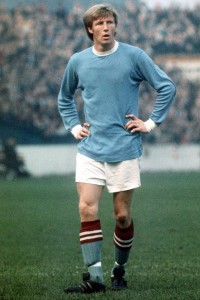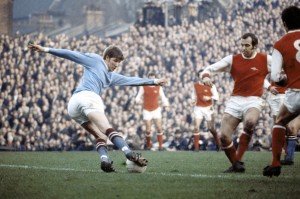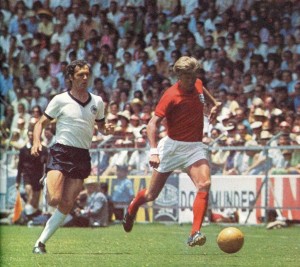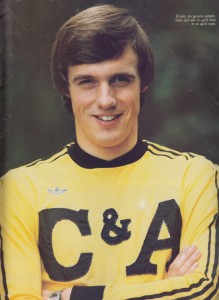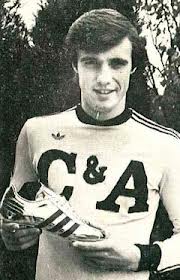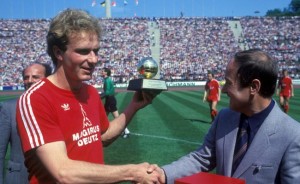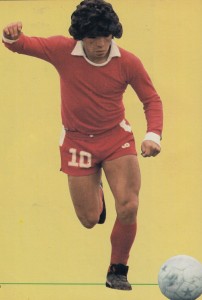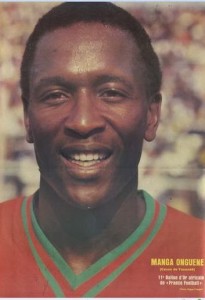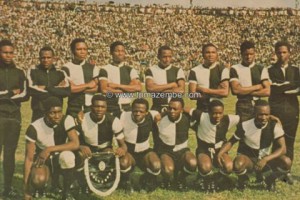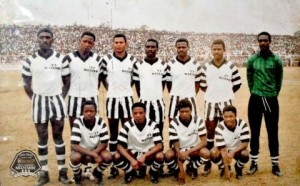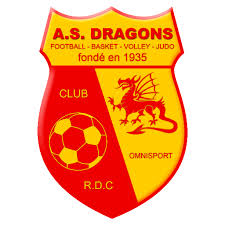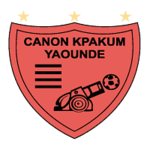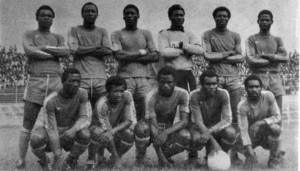Copa de Oro de Campeones Mundiales (World Champions’ Gold Cup) – or Mundialito (Little World Cup) – was not exactly official tournament.
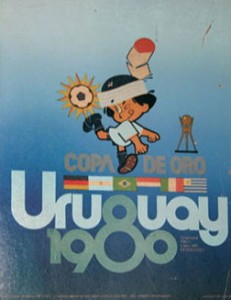 It was organized to commemorate the 50th anniversary of the first World cup, played in 1930. Hence, it was staged at the same place the first world championship was played – in Montevideo, Uruguay, at the very stadium, built 50 years ago for the great occasion – Centenario. It was to be contested between all world champions so far – they were conveniently 6: Uruguay, Brazil, Argentina, West Germany, Italy, and England. A championship of the champions – sounded great. England, however, declined participation and had to be replaced by Holland. Why Holland? If it was just because of her two silver medals, then Czechoslovakia also had a claim. But it was late substitute and Holland was believed more deserving, because they were most recent silver medalists and one of the best world teams in the 1970s. However, the idea was a bit spoiled… it was to be a grand clash of world champions, not runners-up. Blame it on England. The other problem was the very staging of the tournament – it had to be 1980, so to make the numbers right, but 1980 was full and the tournament only rudimentary belongs to it: it started on December 30, 1980 and finished on January 10, 1981. Not only the larger part of Mundialito was played in 1981, but the winner was decided well into 1981. But there was no other way… the Europeans really commanded the schedule: in their summer of 1980 the European championship was played, after that domestic championship and the continental club tournaments. The calendar was full and no club was willing to release players to some international tournament. The focus of attention was elsewhere for the public too. So, the winter mid-season break was the only time left – but England had no such break and find it inconvenient to participate. How seriously the Europeans took Copa de Oro was another matter – after the grueling fall season the players were hardly at their best, preferring rest. Various new players were included in the teams, yet, the teams played largely with their regulars, so it was not just experimental teams. And South Americans had many unknown abroad players, so it looked like more of shaping new teams than fielding those who hardly ever played only to go through some unimportant tournament. The hosts perhaps took the most serious approach.
It was organized to commemorate the 50th anniversary of the first World cup, played in 1930. Hence, it was staged at the same place the first world championship was played – in Montevideo, Uruguay, at the very stadium, built 50 years ago for the great occasion – Centenario. It was to be contested between all world champions so far – they were conveniently 6: Uruguay, Brazil, Argentina, West Germany, Italy, and England. A championship of the champions – sounded great. England, however, declined participation and had to be replaced by Holland. Why Holland? If it was just because of her two silver medals, then Czechoslovakia also had a claim. But it was late substitute and Holland was believed more deserving, because they were most recent silver medalists and one of the best world teams in the 1970s. However, the idea was a bit spoiled… it was to be a grand clash of world champions, not runners-up. Blame it on England. The other problem was the very staging of the tournament – it had to be 1980, so to make the numbers right, but 1980 was full and the tournament only rudimentary belongs to it: it started on December 30, 1980 and finished on January 10, 1981. Not only the larger part of Mundialito was played in 1981, but the winner was decided well into 1981. But there was no other way… the Europeans really commanded the schedule: in their summer of 1980 the European championship was played, after that domestic championship and the continental club tournaments. The calendar was full and no club was willing to release players to some international tournament. The focus of attention was elsewhere for the public too. So, the winter mid-season break was the only time left – but England had no such break and find it inconvenient to participate. How seriously the Europeans took Copa de Oro was another matter – after the grueling fall season the players were hardly at their best, preferring rest. Various new players were included in the teams, yet, the teams played largely with their regulars, so it was not just experimental teams. And South Americans had many unknown abroad players, so it looked like more of shaping new teams than fielding those who hardly ever played only to go through some unimportant tournament. The hosts perhaps took the most serious approach.
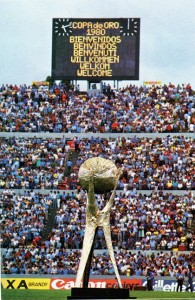 But spoiled is spoiled: of course, the opening ceremony welcomes all world champions in their language, but English is not the official language of Holland. Well, Holland was not world champion… the ironies may pile up, but the Uruguayans came to watch great football, not to read. The 6 teams were divided into 2 round-robin groups, the winners to meet at the final, deciding the best among the champions. Each team had a roster of 18 players – that is, the number usually used at Olympic games, but it was short tournament, so there was no real need for squads of World cup size. Group A was composed of Holland, Italy, and Uruguay, and Group B of Brazil, Argentina, and West Germany. Group B was seemingly stronger.
But spoiled is spoiled: of course, the opening ceremony welcomes all world champions in their language, but English is not the official language of Holland. Well, Holland was not world champion… the ironies may pile up, but the Uruguayans came to watch great football, not to read. The 6 teams were divided into 2 round-robin groups, the winners to meet at the final, deciding the best among the champions. Each team had a roster of 18 players – that is, the number usually used at Olympic games, but it was short tournament, so there was no real need for squads of World cup size. Group A was composed of Holland, Italy, and Uruguay, and Group B of Brazil, Argentina, and West Germany. Group B was seemingly stronger.
